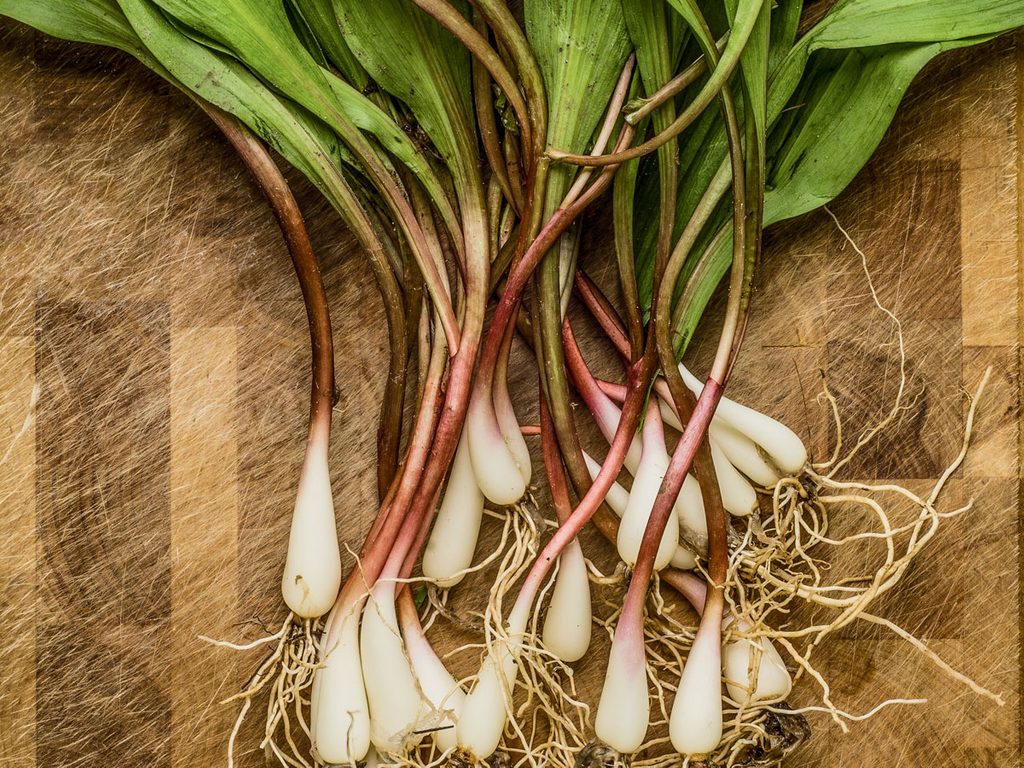This Wild Veggie Is Nature’s Answer to Fighting Allergies

Suffering from spring allergies and ready for a natural solution? Try adding wild leeks into your menu planning. They combat the sneezing season thanks to their high levels of quercetin, a phytonutrient that helps inhibit histamine release.
When spring finally rolls in, it’s time for us to break free from our winter hibernation, wake up our bodies and welcome new energy. Yay! But this happens to be the time when nature is waking up, too. And for some of us, that means seasonal allergies. Ugh.
The good news is that there’s more than just pollen busting out. At this time of year, the very first wild food of the season is also cracking through the soil. That beloved food is our featured ingredient: wild leeks.
If you’ve never tried wild leeks, you must! Your taste buds and seasonal-allergy-induced histamine response will thank you.
What are wild leeks?
Wild leeks, often referred to as “ramps” on fancy menus and in some parts of the United States, are part of the allium family, along with onions and garlic. They grow wild primarily in Manitoba, Ontario and Quebec, as well as the Eastern United States, usually in heavily wooded areas. They are among the first burst of green on the forest floor before it becomes shaded by tree covering. What do these magical wild onions look like? Picture a tulip but without a flower—those long, flat green leaves.
Though the entire plant, from bulb to leaf, is edible, harvesting more than just the leaves kills the plant. Due to overharvesting, wild leek crops are dwindling. Harvesting in Quebec is currently banned. If you find yourself in a growing area and venture into the wilds to forage your own, only harvest the leaves and space out your clippings. Leave the bulbs to regenerate next year. And if you’re buying from your local farmers’ market or at your grocery store, you’ll want to ensure that they were harvested appropriately.
Wild leeks offer the flavour-enhancing benefits of onion and garlic without overpowering any dish.
Remember when I mentioned seasonal allergies and histamine release? Well, nature may deliver the trigger of seasonal allergies, but it also provides a delicious solution with this wild onion. Wild leeks are one of the richest dietary sources of quercetin, a phytonutrient that helps inhibit histamine release, which is often the trigger for seasonal allergy and hay fever symptoms. Wild leeks are also rich in sulphurous compounds, which offer anti-inflammatory and cancer-preventive properties.
Rinse and dry the leaves of wild leeks just before using them.
You can chop them up and add them to eggs, just as you would with spring onions and chives. If you have enough wild leek leaves, sauté them lightly or grind the raw leaves together with some pine nuts or hemp seeds, olive oil and a little sea salt to make a decadent pesto that works as a condiment on just about everything. They are a great addition to soups, pasta dishes and even salads. Their flavour is so distinctly delicious—the taste of spring.
However you choose to use wild leeks, enjoy them mindfully, knowing that they are only available for a few short weeks. Let them be that signal that we’re moving into the warmer months, along with a bounty of more locally grown, wild and cultivated spring and summer favourites.







